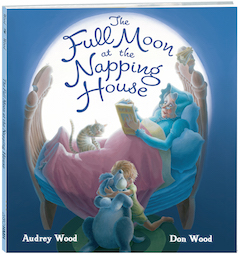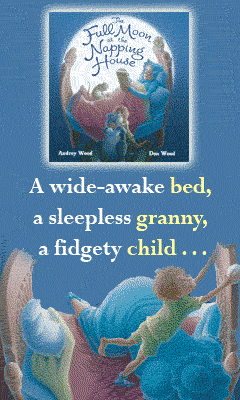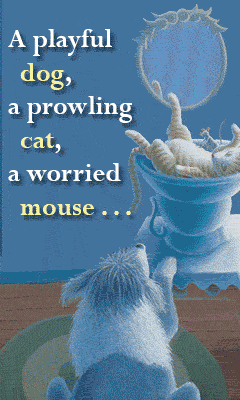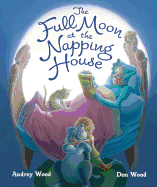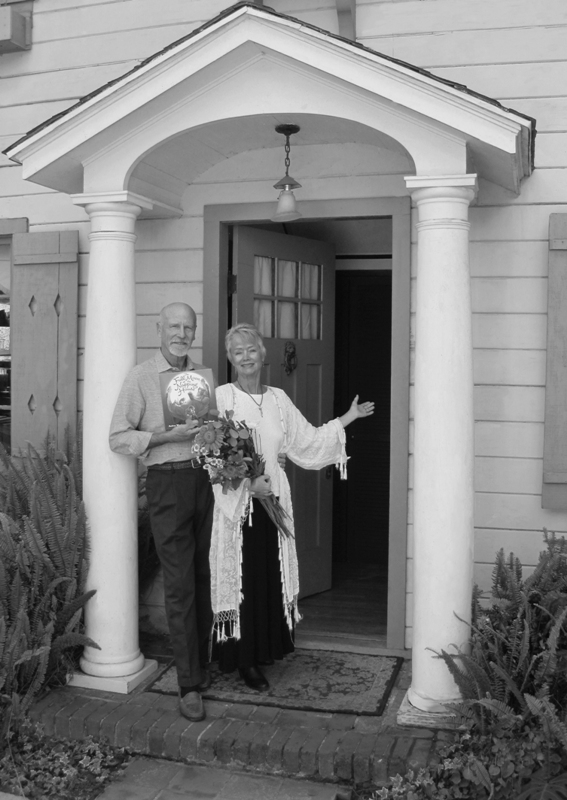The Full Moon at the Napping House
by Audrey Wood, illus. by Don Wood
More than 30 years after the publication of their now classic The Napping House, the husband-and-wife team of Audrey and Don Wood deliver a companion cumulative picture book that will vie for top spot at story hours and bedtime alike.
Where the original story opened on a rainy day and took youngsters inside "a napping house,/ where everyone is sleeping," this new episode features a clear night sky and "a full-moon house,/ where everyone is restless." Parents, teachers and children will thrill to the reprise of the House-that-Jack-Built structure and pore over the ways in which it mirrors the characters and events in the original book.
In the first full view of the full-moon house, bathed in moonlight, Granny stands at her bedroom window with the cat beside her. The next full-bleed spread offers a close-up of the interior of Granny's bedroom, with Granny and the cat at the window as seen from behind, as the moon begins to rise. The dog, under the bed, cocks one eye and observes the boy retrieving a ball from under a chair. The mouse hides at the top of a mirror over a wash basin bowl and pitcher set. The child tosses the ball, the dog scratches, the mouse climbs down the pitcher handle, the cat fixates on something on the window, and Granny, in bed, looks sleep-deprived. "[W]ith that granny/ there is a child,/ a fidgety child/ with a sleepless granny/ in a wide-awake bed/ in a full-moon house,/ where everyone is restless."
As Audrey Wood adds a new character to her cumulative text with each spread, Don Wood increases the luminous quality of the paintings as the moon ascends and casts ever more light on Granny's bed, the boy's chair, the windowsill and everything in the room. The perspective also begins to shift, ever so slightly. He tilts the bed and chair just a little bit more toward readers as "a playful dog" and "prowling cat" enter the rhyme. Soon the boy sets the mirror off-kilter, the mouse lifts the pitcher, a sock winds up on the floor, the dog goes after the ball, and poor Granny covers her ears, eyes wide in panic.
At the moment that "a worried mouse" enters the rhyme, Granny moves her head to where her feet had been. Mayhem breaks loose. The cat leaps in pursuit of the mouse, the mouse leaps to the windowsill, and the dog chases the ball that the boy extends to the canine. Then, suddenly, an agent of change arrives on the windowsill: "a chirping cricket/ sings his song/ to the worried mouse/ and the prowling cat/ and the playful dog/ and the fidgety child/ and the sleepless granny/ in a wide-awake bed/ in a full-moon house,/ where everyone is restless." Don Wood brings a stillness to the illustration; readers will feel as if they can hear the cricket's song as Granny, the boy and dog listen together on the bed, the cat inclines its head to hear, and the mouse pauses just inches from the cricket on the windowsill.
"A full-moon song/ that soothes the mouse" accompanies an illustration that now features a nearly complete aerial view of the room, as Granny and grandson make the bed together, and the cat washes up in the wash bowl. Now the people and creatures begin to quiet down. The mouse "calms the cat" who "gentles the dog" (by licking the pooch)--it's as if the moonlight has cast a spell. The dog "snuggles the boy" as Granny opens a book. As each being begins to settle down, Don Wood starts to right the furniture, too, so that, frame by frame, the room gradually reaches equilibrium. The boy snuggles in next to Granny "in the dreamy bed" and they read together "in the full-moon house,/ where no one now is restless." The parting view returns to the window of Granny's bedroom, where a golden light spills out onto the lawn of the full-moon night.
Children will beg to return to the Napping House under the full moon over and over, where new discoveries await them with repeated readings. They'll note that the cricket starts its approach from the moment Granny stands at her window; the cat is the first to spot it. The boy at one point stashes his ball in a perfectly carved groove of Granny's headboard (and how does it end up next to the cat napping on the windowsill at story's end?). The boy's stray sock makes a comfy bed for the mouse. And the cricket, its job complete, flies off by the light of the moon in the penultimate spread.
Those who learned to read with the Napping House will applaud this triumphant second act with a nocturnal backdrop, and children new to this loving household get to double their pleasure. Bravo for this encore from Audrey and Don Wood! --Jennifer M. Brown



